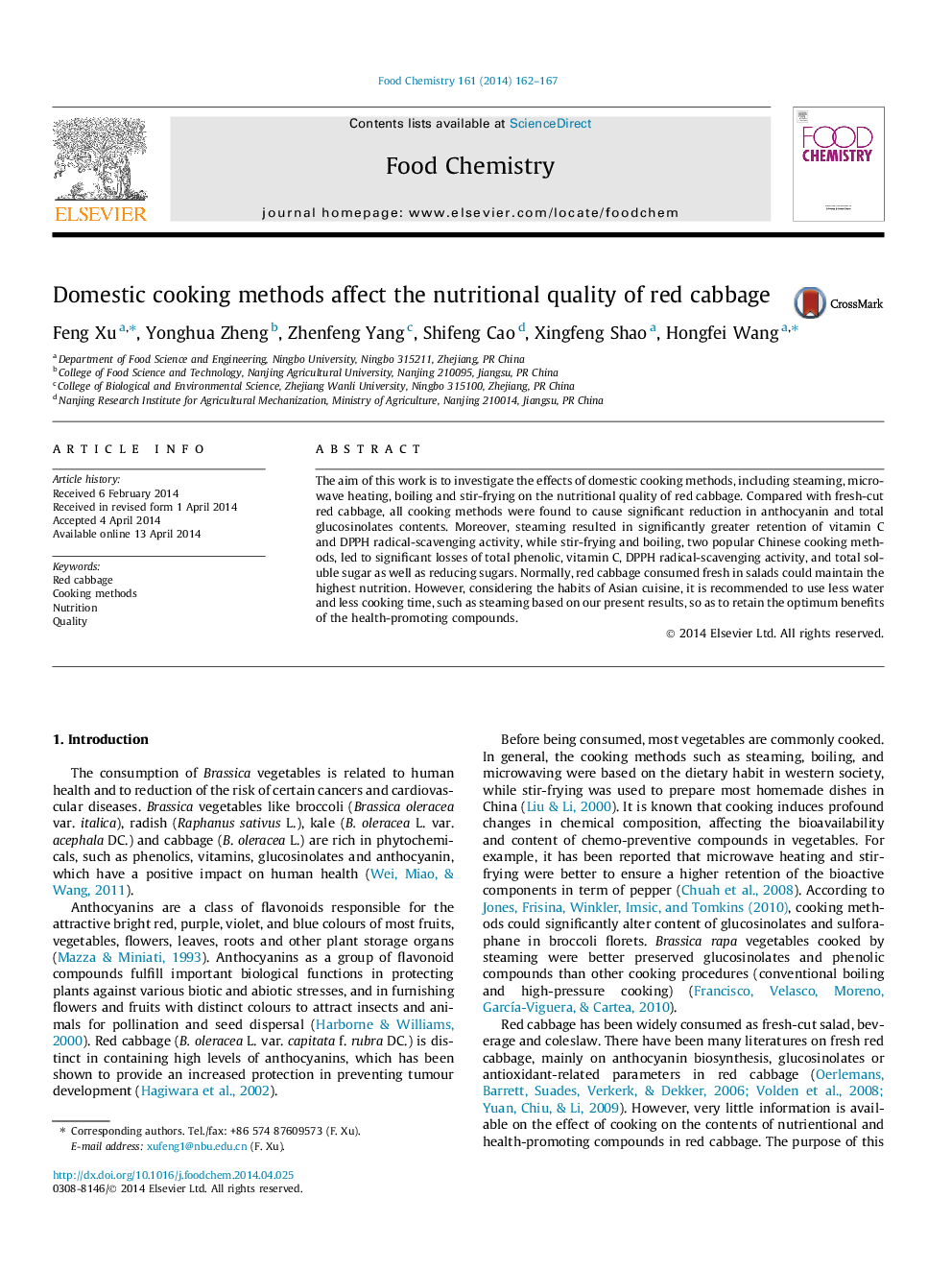| Article ID | Journal | Published Year | Pages | File Type |
|---|---|---|---|---|
| 7596969 | Food Chemistry | 2014 | 6 Pages |
Abstract
The aim of this work is to investigate the effects of domestic cooking methods, including steaming, microwave heating, boiling and stir-frying on the nutritional quality of red cabbage. Compared with fresh-cut red cabbage, all cooking methods were found to cause significant reduction in anthocyanin and total glucosinolates contents. Moreover, steaming resulted in significantly greater retention of vitamin C and DPPH radical-scavenging activity, while stir-frying and boiling, two popular Chinese cooking methods, led to significant losses of total phenolic, vitamin C, DPPH radical-scavenging activity, and total soluble sugar as well as reducing sugars. Normally, red cabbage consumed fresh in salads could maintain the highest nutrition. However, considering the habits of Asian cuisine, it is recommended to use less water and less cooking time, such as steaming based on our present results, so as to retain the optimum benefits of the health-promoting compounds.
Related Topics
Physical Sciences and Engineering
Chemistry
Analytical Chemistry
Authors
Feng Xu, Yonghua Zheng, Zhenfeng Yang, Shifeng Cao, Xingfeng Shao, Hongfei Wang,
